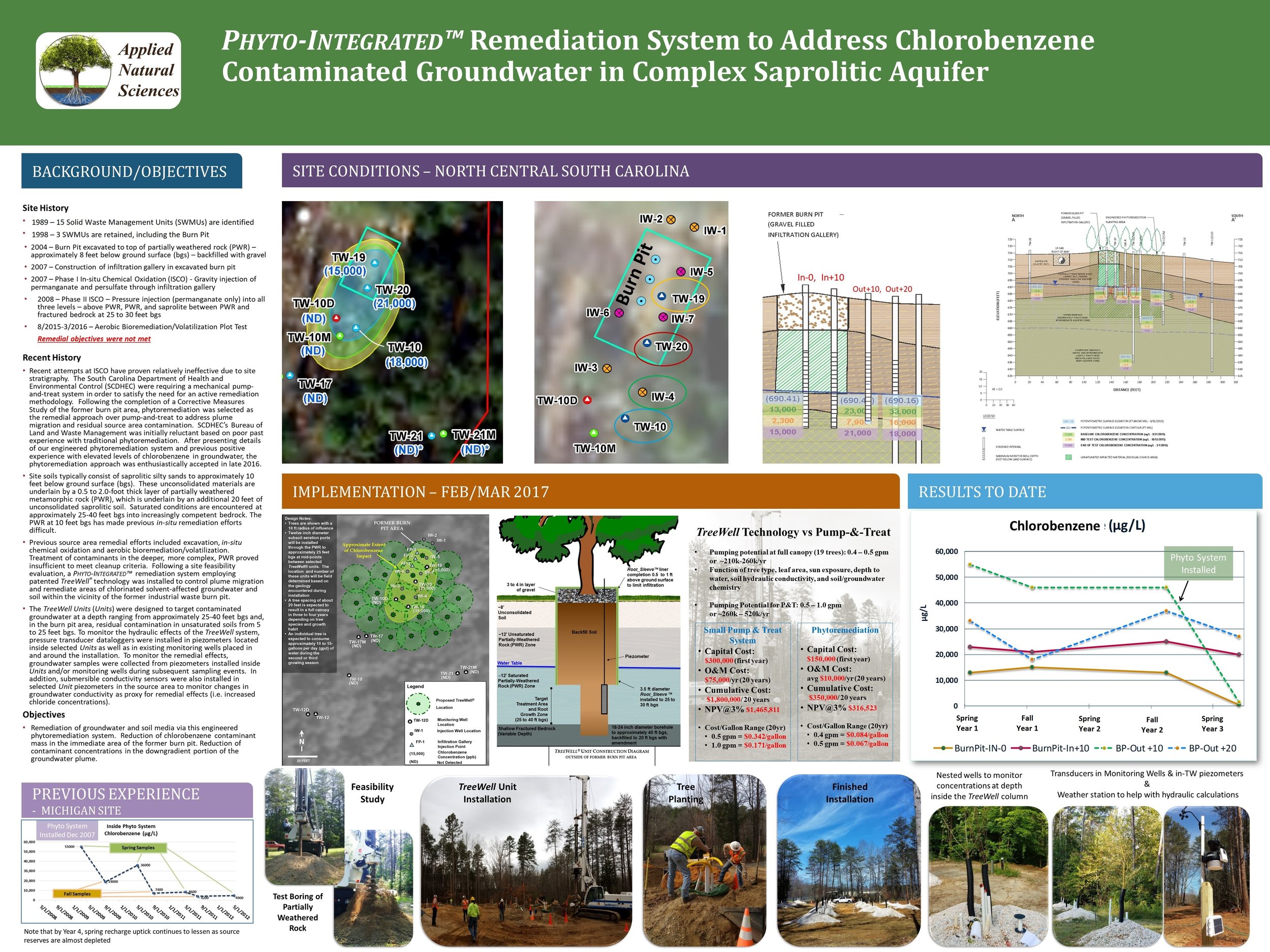
Nature-based solutions in even the most challenging conditions.
Experience the difference our TreeWell® Systems can make.
Project Spotlights
Fractured Bedrock
New Stanton, PA
Target contaminants: trichloroethene and its degradation products
Depth: Up to 45 ft bgs
Deep Groundwater & Phytotoxicity
Carlyss, LA
Target contaminants: benzene, chlorobenzene, toluene, diphenyl ether, phenol; 1,1,2-TCA; 1,2-DCA; PCE; TCE; Chloroform; cis-1,2-DCE; trans-1,2-DCE; 1,1-DCE; vinyl chloride; 1,1-DCA; and lower concentrations of several other VOC constituents in shallow soils and groundwater
Depth: Approximately 25 – 115 ft bgs
Regulatory Closure
Sarasota, FL
Target contaminants: 1,4-Dioxane and a consequential plume migrating offsite via an aquifer.
Depth: ~ 15 ft bgs
Traditional phyto has its limits.
Conventional or non-engineered approaches treat shallow, impacted soil and groundwater and are appropriate for low-contaminant concentrations or low-level phytotoxicity. Problems with restricted root development and annual rainfall hinder broad implementation of such traditional systems.
We have solutions.
Our innovative systems expand the applicability and efficacy of phytoremediation. By engineering the growth of roots and managing the water that gets to them, we are able to utilize trees to reliably reach groundwater at depths exceeding 100 feet and direct root growth and water consumption to a target horizon in the aquifer of interest, while excluding water from other sources.
We are experts in the use of plants to remediate contaminants in groundwater and soil as well as the hydraulic control of plume geometry and contaminant migration.
Contaminants successfully treated by TreeWell® Systems
• Volatile Organic Compounds (VOCs) • Semi-Volatile Organic Compounds (SVOCs) including 1,4-dioxane • Pesticides • Agricultural inorganics such as nitrate & ammonium • Tritium • Solubilized metals: lead, arsenic, boron, zinc, cadmium
• Volatile Organic Compounds (VOCs) • Semi-Volatile Organic Compounds (SVOCs) including 1,4-dioxane • Pesticides • Agricultural inorganics such as nitrate & ammonium • Tritium • Solubilized metals: lead, arsenic, boron, zinc, cadmium
*Applied Natural Sciences is currently working on multiple pilot-scale TreeWell projects for the remediation of PFAS-impacted groundwater.
Benefits of Our Patented TreeWell Remediation Systems
-
On average, the lifetime cost of our remediation system is substantially lower than conventional remedies such as groundwater pump-and-treat systems.
-
Our systems have been successfully used to provide contaminant degradation in soil and groundwater under a variety of lithologic conditions. Additionally, our systems can be used to provide hydraulic control of groundwater, thereby mitigating plume migration.
Treatable contaminants include soluble compounds in soil and groundwater, including most VOCs, agricultural inorganics, solubilized metals, PFOA/PFAS, and semi-volatile organics.
-
While significant remediation is taking place in the soil and groundwater in the subsurface, the foliage of beautiful willows, hackberries, live oaks, palms, poplars, or spruce trees is growing above the surface.
-
As the trees mature, their groundwater uptake rates increase, providing improved hydraulic control and contaminant mass removal. Also, the root system typically hosts robust microbial populations that are capable of degrading many contaminants.
-
Our pioneering work in phytoremediation began in 1988. In 1993, Applied Natural Sciences was founded to implement our unique TreeMediation system. We have successfully completed dozens of projects in North America, South America, and Europe, including projects with a wide range of climatic and physiographic conditions.







